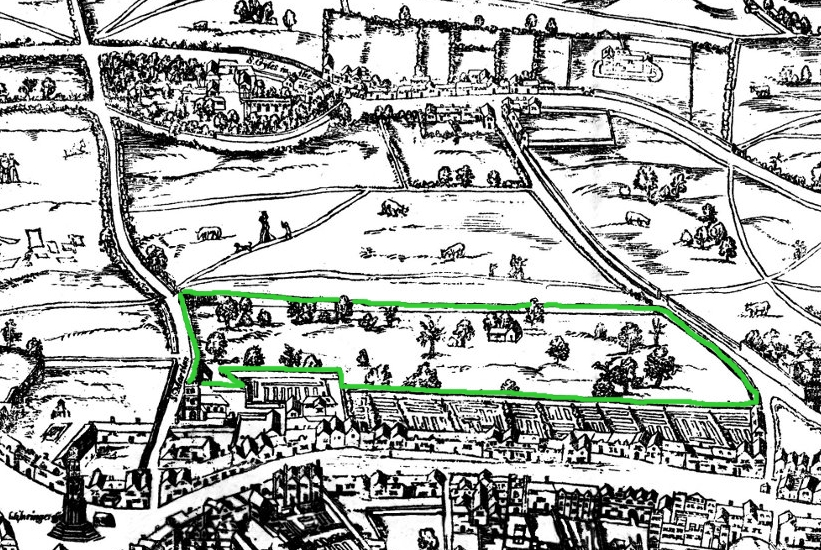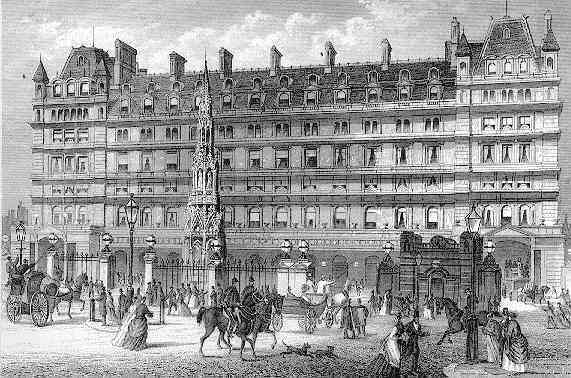|
London Transport Museum
The London Transport Museum (often abbreviated as the LTM) is a transport museum based in Covent Garden, London. The museum predominantly hosts exhibits relating to the heritage of London's transport, as well as conserving and explaining the history of it. The majority of the museum's exhibits originated in the collections of London Transport, but, since the creation of Transport for London (TfL) in 2000, the remit of the museum has expanded to cover all aspects of transportation in the city and in some instances beyond. The museum operates from two sites within London. The main site in Covent Garden uses the name of its parent institution, and is open to the public every day excluding over Christmas, having reopened in 2007 after a two-year refurbishment. The other site, located in Acton, is known as the London Transport Museum Depot and is principally a storage site of historic artefacts that is open to the public on scheduled visitor days throughout the year. The museum w ... [...More Info...] [...Related Items...] OR: [Wikipedia] [Google] [Baidu] |
Covent Garden
Covent Garden is a district in London, on the eastern fringes of the West End, between St Martin's Lane and Drury Lane. It is associated with the former fruit-and-vegetable market in the central square, now a popular shopping and tourist site, and with the Royal Opera House, itself known as "Covent Garden". The district is divided by the main thoroughfare of Long Acre, north of which is given over to independent shops centred on Neal's Yard and Seven Dials, while the south contains the central square with its street performers and most of the historical buildings, theatres and entertainment facilities, including the London Transport Museum and the Theatre Royal, Drury Lane. The area was fields until briefly settled in the 7th century when it became the heart of the Anglo-Saxon trading town of Lundenwic, then abandoned at the end of the 9th century after which it returned to fields. By 1200 part of it had been walled off by the Abbot of Westminster Abbey for use as arable l ... [...More Info...] [...Related Items...] OR: [Wikipedia] [Google] [Baidu] |
Acton, London
Acton () is a town and area in west London, England, within the London Borough of Ealing. It is west of Charing Cross. At the 2011 census, its four wards, East Acton, Acton Central, South Acton and Southfield, had a population of 62,480, a ten-year increase of 8,791 people."Key Statistics; Quick Statistics: Population Density" ''''. . Retrieved 31 October 2014. |
Brentford
Brentford is a suburban town in West London, England and part of the London Borough of Hounslow. It lies at the confluence of the River Brent and the Thames, west of Charing Cross. Its economy has diverse company headquarters buildings which mark the start of the M4 corridor; in transport it also has two railway stations and Boston Manor Underground station on its north-west border with Hanwell. Brentford has a convenience shopping and dining venue grid of streets at its centre. Brentford at the start of the 21st century attracted regeneration of its little-used warehouse premises and docks including the re-modelling of the waterfront to provide more economically active shops, townhouses and apartments, some of which comprises Brentford Dock. A 19th and 20th centuries mixed social and private housing locality: New Brentford is contiguous with the Osterley neighbourhood of Isleworth and Syon Park and the Great West Road which has most of the largest business premises. H ... [...More Info...] [...Related Items...] OR: [Wikipedia] [Google] [Baidu] |
London Passenger Transport Board
The London Passenger Transport Board was the organisation responsible for local public transport in London and its environs from 1933 to 1948. In common with all London transport authorities from 1933 to 2000, the public name and brand was London Transport. History The London Passenger Transport Board (LPTB) was established pursuant to the London Passenger Transport Act 1933 enacted on 13 April 1933. The bill had been introduced by Herbert Morrison, who was Transport Minister in the Labour Government until 1931. Because the legislation was a hybrid bill it had been possible to allow it to 'roll over' into the new parliament under the incoming National Government. The new government, although dominated by Conservatives, decided to continue with the bill, with no serious changes, despite its extensive transfer of private undertakings into the public sector. On 1 July 1933, the LPTB came into being, covering the "London Passenger Transport Area". The LPTB's financial structure ... [...More Info...] [...Related Items...] OR: [Wikipedia] [Google] [Baidu] |
London Electric Railway
The London Electric Railway (LER) was an underground railway company operating three lines on the London Underground. It was formed in 1910 and existed until 1933, when it was merged into the London Passenger Transport Board. History The LER was formed and owned by the Underground Electric Railways Company of London (UERL) in 1910 to combine the management of three of the company's subsidiary deep-level tube railway companies: the Baker Street and Waterloo Railway (BS&WR), the Charing Cross, Euston and Hampstead Railway (CCE&HR) and the Great Northern, Piccadilly and Brompton Railway (GNP&BR) which had opened in 1906 and 1907. The merger was carried out in accordance with the ''London Electric Railway Amalgamation Act, 1910'' by transferring the assets of the CCE&HR and the BS&WR to the GNP&BR and renaming the GNP&BR as the London Electric Railway. Although the LER management was combined, the three lines continued to be identified separately for operational purposes as the Bak ... [...More Info...] [...Related Items...] OR: [Wikipedia] [Google] [Baidu] |
London General Omnibus Company
The London General Omnibus Company or LGOC, was the principal bus operator in London between 1855 and 1933. It was also, for a short period between 1909 and 1912, a motor bus manufacturer. Overview The London General Omnibus Company was founded in 1855 to amalgamate and regulate the many independent horse-drawn omnibus services then operating in London. Originally an Anglo-French enterprise, also known as the Compagnie Generale des Omnibus de Londres, the LGOC soon became the largest omnibus operator in London. It bought out hundreds of independently owned buses and established a consistent level of service for its fleet. Within a year, the LGOC controlled 600 of London's 810 omnibuses. Under its chairman Sir John Pound, in 1902 it looked at an option to purchase a competitor, the Star Omnibus Company, but it was unable to complete negotiations. LGOC began using motor omnibuses in 1902, and the last LGOC horse-drawn bus ran on 25 October 1911. In 1908 the LGOC bought the ... [...More Info...] [...Related Items...] OR: [Wikipedia] [Google] [Baidu] |
Charing Cross Railway Station
Charing Cross railway station (also known as London Charing Cross) is a central London railway terminus between the Strand and Hungerford Bridge in the City of Westminster. It is the terminus of the South Eastern Main Line to Dover via Ashford. All trains are operated by Southeastern, which provides the majority of commuter and regional services to south-east London and Kent. It is connected to Charing Cross Underground station and is near to Embankment Underground station and Embankment Pier. The station was originally opened by the South Eastern Railway in 1864. It takes its name from its proximity to the road junction Charing Cross, the notional "centre of London" from which distances from the city are measured. During the 19th century the station became the main London terminus for continental traffic via boat trains, and served several prestigious international services. It was badly damaged by an engineering accident in 1905 and extensively rebuilt, subsequently beco ... [...More Info...] [...Related Items...] OR: [Wikipedia] [Google] [Baidu] |
Covent Garden Tube Station
Covent Garden is a London Underground station serving Covent Garden and the surrounding area in the West End of London. It is on the Piccadilly line between Leicester Square and Holborn stations and is in Travelcard Zone 1. The station is at the corner of Long Acre and James Street and the street-level concourse is a Grade II listed building. History The station was planned by the Great Northern and Strand Railway (GN&SR), which had received parliamentary approval for a route from Wood Green station (now Alexandra Palace) to Strand in 1899. After the GN&SR was taken over by the Brompton and Piccadilly Circus Railway (B&PCR) in September 1901, the two companies came under the control of Charles Yerkes' Metropolitan District Electric Traction Company before being transferred to his new holding company, the Underground Electric Railways Company of London (UERL) in June 1902. To connect the two companies' planned routes, the UERL obtained permission for new tunnels between Piccadill ... [...More Info...] [...Related Items...] OR: [Wikipedia] [Google] [Baidu] |
Bryan Avery
Bryan Robert Avery MBE RIBA (2 January 1944 – 4 July 2017) was an English architect, born in Wallingford, Berkshire. After his childhood years spent in Lymington in the New Forest, Hampshire, he studied architecture at Leicester College of Art (now the De Montfort University), followed by an MA in the History and Theory of Architecture at Essex University under Professors Joseph Rykwert and Dalibor Vesely. He established his own practice Avery Associates Architects in 1976. The practice has built a wide range of projects ranging from theatres and museums to offices and educational buildings, many of which have won respected awards. He published a book, ''Fragments of Wilderness City'' () in 2011 which describes his work and theory. Awards Avery was awarded the MBE in the Queen's Birthday Honours in June 2015 for services to architecture. In 2010 Avery was awarded the Chicago Athenaeum International Architecture Award for the Old Bailey office building. In 1999, Avery w ... [...More Info...] [...Related Items...] OR: [Wikipedia] [Google] [Baidu] |
Clapham
Clapham () is a suburb in south west London, England, lying mostly within the London Borough of Lambeth, but with some areas (most notably Clapham Common) extending into the neighbouring London Borough of Wandsworth. History Early history The present day Clapham High Street is on the route of a Roman road. The road is recorded on a Roman monumental stone found nearby. According to its inscription, the stone was erected by a man named Vitus Ticinius Ascanius. It is estimated to date from the 1st century. (The stone was discovered during building works at Clapham Common South Side in 1912. It is now placed by the entrance of the former Clapham Library, in the Old Town.) According to the history of the Clapham family, maintained by the College of Heralds, in 965 King Edgar of England gave a grant of land at Clapham to Jonas, son of the Duke of Lorraine, and Jonas was thenceforth known as Jonas "de fClapham". The family remained in possession of the land until Jonas's great- ... [...More Info...] [...Related Items...] OR: [Wikipedia] [Google] [Baidu] |
Syon Park
Syon Park is the garden of Syon House, the London home of the Duke of Northumberland in Isleworth in the London Borough of Hounslow The London Borough of Hounslow () is a London borough in West London, England, forming part of Outer London. It was created in 1965 when three smaller borough councils (forming part of the former Middlesex County Council area) amalgamated under .... It was landscaped by Capability Brown in the 18th century, and it is Grade I listed by English Heritage under the Historic Buildings and Ancient Monuments Act 1953 for its special historic interest. The main gardens are a Site of Nature Conservation Interest, Site of Borough Importance for Nature Conservation, Grade I, and the flood meadows next to the River Thames are a biological Site of Special Scientific Interest (SSSI) and a Site of Nature Conservation Interest, Site of Metropolitan Importance for Nature Conservation. History Syon was the site of Sion Abbey, which was founded in 1415 and named ... [...More Info...] [...Related Items...] OR: [Wikipedia] [Google] [Baidu] |
.jpg)








